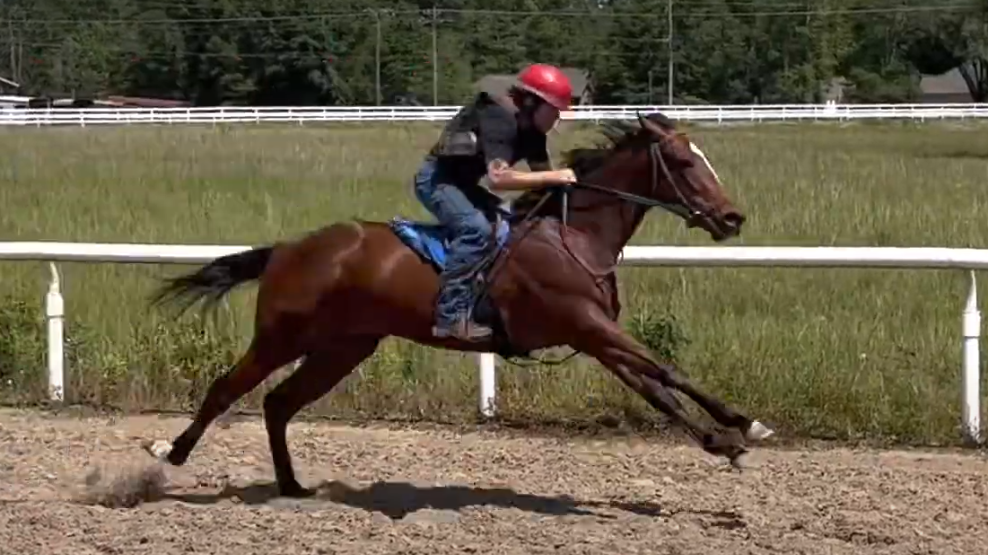Last updated: July 3, 2025
The sight of a jockey using a whip on a racehorse is common, but it raises a crucial question: Is this practice truly necessary, or is it simply a tradition overdue for re-evaluation? As public concern over animal welfare grows, the role of whipping in horse racing has become one of the sport’s most debated topics, balancing long-held practices with mounting scientific evidence and ethical considerations.
This article explores the multifaceted issue of whipping in horse racing, examining its purpose, its impact on horses, and the growing movement toward humane training and racing practices. Drawing on decades of firsthand experience in the industry, I’ll share observations and insights to shed light on this contentious topic.

The Role of Whipping in Horse Racing
Traditionally, whips have served three main purposes in horse racing: encouraging speed, steering, and ensuring safety. However, studies have questioned these roles:
- Encouragement: Research shows little correlation between whipping and increased speed.
- Steering: Evidence suggests jockey skill and rein control are more effective than whip use for maintaining direction.
- Safety: Critics argue that safety concerns can often be managed without relying on whips.
While these uses are deeply embedded in racing culture, scientific research increasingly challenges their effectiveness. Ethical concerns also highlight the potential physical and emotional toll on horses, raising questions about whether these practices can be justified in modern racing.

Does Whipping Make Horses Run Faster?
The use of whips in horse racing has long been defended as a necessary tool for improving performance, steering, and safety. However, emerging scientific evidence and practical observations increasingly question these claims.
Scientific Evidence on Whipping
- Effectiveness of Whipping:
- Research published in the National Library of Medicine found no measurable improvement in race performance or finishing times when whips were used compared to races where they were not. Instead, factors like natural competitiveness and fitness often play a more significant role in a horse’s performance. In fact, some studies suggest that horses may accelerate more in races without whips, challenging the assumption that whipping enhances speed.
- Desensitization and Stress:
- Horses subjected to repeated whipping can become desensitized over time, reducing the tool’s effectiveness. Conversely, many horses display stress-related behaviors, such as tail swishing, pinned ears, or erratic movements, indicating that whipping may harm their mental state.
- Stress in racehorses, often exacerbated by practices like whipping, can significantly affect performance. For insights into managing such stress, visit our article on stress in racehorses.
- “Hands and Heels” Experiment:
- In “hands and heels” races, jockeys carry whips but are prohibited from using them. Research conducted by Sydney University compared these races with traditional ones, finding no significant differences in finishing times, jockey behavior, or interference on the course. Stewards’ reports similarly documented comparable safety outcomes, with 18 of 126 reports noting “nothing to report,” 12 of which came from whip-free races. These results suggest that whipping is not essential for competitive or safe racing.
- Steering Argument:
- Proponents of whip use often argue that it is critical for steering. However, studies have yet to demonstrate that whipping improves control. Instead, evidence points to rider skill and effective training methods as the primary factors in maintaining safety and direction. The lack of research on alternative methods underscores the need for further evaluation of non-whip strategies in racing.
- Explore horse training with positive reinforcement for humane methods that enhance equine cooperation.

The Horse’s Experience with Whipping in Racing
From a trauma-informed perspective, the experience of being whipped can have profound physical and psychological consequences for horses:
- Behavioral Observations:
- Horses subjected to frequent whipping often display stress indicators, such as tail swishing, pinned ears, and increased flight responses. These behaviors, as detailed in studies on equine welfare, reflect the horse’s attempt to communicate discomfort or anxiety.
- Research from the International Society for Equitation Science (ISES) highlights that the application of aversive stimuli, like whipping, should follow strict timing standards for effectiveness and minimal distress. However, these standards are rarely met in horse racing, exacerbating stress and reducing trust between horse and rider.
- Emotional Toll:
- Horses are sentient beings capable of experiencing fear, anxiety, and pain, as supported by research on equine cognition. The repeated use of a whip can erode trust between the horse and handler, leading to long-term psychological impacts.
- Prolonged exposure to stress from whipping can result in unusual behaviors, such as excessive head shaking or teeth grinding, which often serve as coping mechanisms. Understanding these signs is crucial for improving welfare standards. Learn more about unusual horse behaviors and their meanings.
- Counterproductive Effects:
- Whipping is often used most frequently during the final stages of a race when a horse is tired and less able to respond effectively. This constitutes positive punishment, which, as highlighted by the ISES Training Principles, is more effective at discouraging behavior rather than encouraging it. This misuse may increase stress and fatigue, further diminishing performance.
- Studies have also associated whip use with falls and fractures, likely due to tired horses making proprioceptive errors under the combined effects of fatigue and stress.
By examining scientific findings and humane training principles, it becomes evident that whipping in racing not only challenges ethical standards but also fails to align with effective equitation practices.

Whipping in Horse Racing: Technology and Regulations
Modern racing has seen significant advancements in whip design and stricter regulations aimed at addressing welfare concerns. Padded whips, designed to absorb impact, represent a step forward in minimizing harm. For example, I once experienced a demonstration where a jockey struck me with a padded whip; despite the force, it didn’t hurt. However, this raises a broader question: even with reduced potential for harm, is whipping necessary?
Studies have revealed limitations in these advancements:
- Unpadded Sections: High-speed footage shows that unpadded sections of the whip often make contact with the horse, potentially causing discomfort.
- Backhand Strikes: These can exert greater force than forehand strikes, raising concerns about their safety and efficacy.
A study from the Journal of Veterinary Behavior highlights that even padded whips can cause discomfort, emphasizing the need for continued scrutiny of whip design.
Regulatory bodies have responded with strict guidelines:
- Horseracing Integrity and Safety Authority (HISA): Limits jockeys to six strikes per race.
- British Horseracing Authority (BHA): Allows up to seven strikes in flat races and eight in jumps.
- Equipment Requirements: Only energy-absorbing padded whips, such as the ProCush Flat Race Whip, are permitted.
In Louisiana, where I race horses, similar strike limits are enforced. Exceeding these limits results in reprimands, suspensions, or even permanent barring. These regulations reflect the growing emphasis on accountability in the industry.
Despite these measures, challenges in enforcement remain:
- Counting Strikes: In the fast-paced environment of a race, accurately counting whip strikes is difficult.
- Assessing Strike Force: Judging the intensity of each strike adds another layer of complexity.
These enforcement gaps highlight the need for clearer oversight and technological advancements to ensure compliance. While these rules demonstrate a commitment to balancing tradition and welfare, there is room for continued improvement in both design and regulation.

The “Sportsman’s Analgesia” Debate in Whipping Horses
The “sportsman’s analgesia” theory, proposed by the BHA, suggests that adrenaline blunts a horse’s perception of pain during a race, justifying whip use. Critics argue this theory lacks empirical support. While adrenaline may momentarily dull pain, it does not address the long-term physical or psychological impacts of whipping.
This argument also highlights a disconnect between theoretical justifications and enforcement. Stewards, tasked with ensuring compliance, often rely on subjective assessments, leading to inconsistent penalties and further controversy. Research from Sydney University emphasizes the need for prioritizing equine welfare over theoretical defenses.
Public Views on Whipping in Horse Racing
The public’s view of whipping in horse racing is undergoing a dramatic shift. Surveys by organizations like World Horse Welfare reveal that over 50% of respondents consider whipping unnecessary and harmful. Protests against high-profile events like the Grand National, along with declining race attendance, underscore growing disapproval of practices seen as cruel. These trends reflect a broader societal demand for improved animal welfare in sports.
This erosion of public trust jeopardizes horse racing’s “social license to operate”—the legitimacy and support required to sustain the sport. Without adapting to changing societal expectations, the industry risks reputational damage, stricter regulatory interventions, and a decline in popularity amid competition from alternative forms of entertainment. For a deeper exploration of these challenges, see Is Horse Racing a Dying Industry?.
From my perspective, while these advancements and regulations reflect an effort to balance welfare with tradition, there’s still work to be done. Ensuring enforcement reliability and aligning technology with its intended purpose are critical steps toward addressing public concerns and maintaining the sport’s integrity.

The Future of Whipping in Horse Racing: A Call for Change
As public scrutiny and scientific evidence increasingly challenge traditional practices, the horse racing industry faces a pivotal moment to embrace humane alternatives that prioritize horse welfare while maintaining the sport’s competitive spirit.
Alternatives to Whipping
- Positive Reinforcement:
- Training methods that reward desired behaviors, such as treat-based systems or verbal praise, are not only more humane but also highly effective. Studies have shown that horses trained using positive reinforcement are calmer and more cooperative during competitions.
- Disciplines like dressage and showjumping frequently utilize these methods, demonstrating their practicality even in high-stakes environments. For more tips on humane horse training, visit our Horse Training with Positive Reinforcement guide.
- Improved Rider Skills:
- Jockeys can develop non-whip-related cues for steering, such as weight shifts and rein control, which foster better communication with the horse. Enhanced horsemanship skills not only improve performance but also build trust between horse and rider.
- Riders with advanced horsemanship skills often observe reduced stress behaviors in horses, making them more responsive. Learn more about how Jockeys make horses run faster.
- Whip-Free Racing:
- The success of “hands and heels” races, where jockeys are prohibited from using whips, proves that competitive racing can thrive without relying on this tool. In fact, I’ve experienced this firsthand. In a recent race, my horse broke well from the gates, took the lead, and maintained it all the way to the finish line—without the jockey ever needing to use the whip. This highlights that natural competitiveness and fitness often outweigh any external encouragement.
- Moving toward whip-free racing not only addresses public concerns but also prioritizes horse welfare, ensuring the sport’s sustainability and integrity.
FAQs on Whipping in Horse Racing
Why do jockeys whip horses?
Jockeys whip horses as a form of non-verbal communication to guide them during races, ensure their safety by preventing accidents, and encourage them to maintain or increase speed, especially in critical moments of the race.
Does whipping make horses run faster?
The impact of whipping on a horse’s speed is a topic of debate. Some studies suggest that whipping does not significantly increase a horse’s speed, while others indicate it may have a short-term effect on performance. The effectiveness can vary based on the individual horse’s response.
What are the guidelines and regulations on whip use in horse racing?
Racing authorities have established specific guidelines that include strict limits on the number of times a horse can be whipped and the design of whips to minimize pain and discomfort. These rules are designed to ensure the welfare of horses while maintaining the competitive integrity of the sport.
Check out the YouTube video below; it provides a good perspective of how jockeys use whips in a race.
Conclusion
The use of whips in horse racing remains a topic of significant debate, but it’s essential to recognize their purpose when used correctly. As tools for encouragement and steering, whips play a role in maintaining the safety and integrity of the sport. Modern advancements, such as padded whips and strict regulations, ensure their use is as humane as possible while safeguarding equine welfare.
As a lifelong horseman, I’ve seen that effective communication and trust between horse and rider are paramount. In my experience, a well-trained horse responds not just to physical cues but also to the rider’s intent, fostering a partnership built on understanding. Whips, when used appropriately, are part of this communication—not a tool of force but one of guidance and encouragement.
The horse racing industry must continue evolving, balancing tradition with innovation. By maintaining humane practices, adhering to stringent regulations, and engaging in open dialogue about the sport’s ethical standards, we can ensure that horse racing remains a respected and celebrated tradition.
Let’s work together to keep the focus on the bond between horse and rider, the spirit of competition, and the welfare of these incredible athletes who make the sport possible.
Call to Action
Discover more about the complexities of whipping in horse racing by exploring reputable sources like the Journal of Veterinary Behavior and organizations such as World Horse Welfare. Join the conversation to shape a more ethical and informed future for the sport.
As a racehorse owner with over 25 years of experience, I aim to provide clarity on this debated topic. Let’s continue this dialogue to ensure the welfare of our equine athletes and the integrity of horse racing.

About the Author: Miles Henry
Lifelong Horseman | Racehorse Owner | Published Author
Miles Henry brings over 25 years of hands-on experience training and owning Thoroughbred racehorses. Raised with Quarter Horses and Appaloosas, he’s spent a lifetime learning from horses—on the track, in the barn, and in the field. Today, he runs a small but successful racing stable in Louisiana and shares real-world insights on HorseRacingSense.com, helping horse owners, fans, and bettors navigate the sport with confidence.
📚 Books: View Miles’s books on Amazon »
🎧 Podcast Guest: Animal Tales Ep. 32 |
YouTube Interview
📩 Newsletter: Sign up for racing tips and horse care advice »
🔗 Follow Miles:
Twitter |
Facebook |
YouTube


